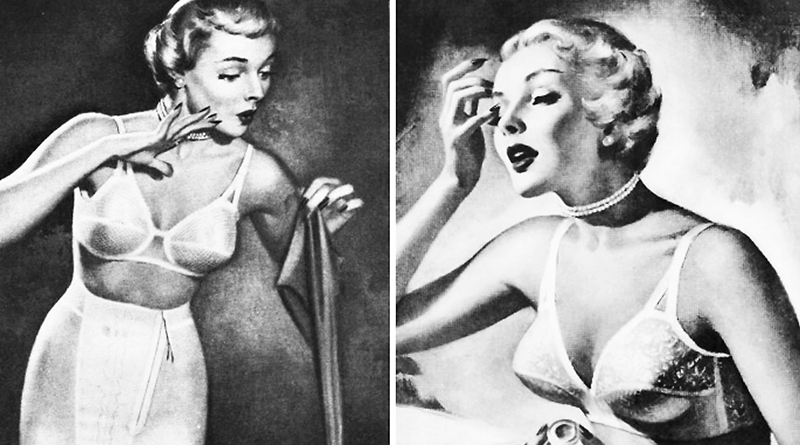A Brief On Lingerie ~ The History of Ordinary Things

Do you wonder about the history of women’s undergarments? From the time of our origins until the 1500s, NO underwear was worn. This made toileting, i.e. squatting, easy. So, what was the purpose of early undergarments?
- Warmth
- Comfort from the rub of rough fabrics
- Absorbing body oils and sweat to keep fabrics clean
- Shaping the body
1500s – This century claims to be the earliest documented evidence of underwear, meaning garments worn beneath clothing. Layers and layers of outer garments indicated a woman’s social status. The undergarment was made of 2 separate panels (like kitchen towels) that were tied at the waist, i.e. crotchless.
1700s – Hoop skirts were popular. Women couldn’t reach their bottoms with all the layers and the rigid dress form. (Remember-squatting.) They wore shifts which were like a long sleeve nightgown, for warmth and to keep outwear clean. Bathing was infrequent and outer wear difficult to launder. Intimate relations could be had while fully clothed. Recall, homes were cold and small and relations often occurred in common areas.
1800s – The corset, often worn on the outside, synched the waist and supported the breasts. They were first tied with strings. Crotchless “bloomers” were added as dresses got shorter.
During the Victorian era of the late 1800s, fashion took on an erotic role showing a little camisole at the breast line. This was the first association of undergarments with female attraction. The bum roll and bustle, both added to make the hips appear larger, made it difficult to sit down or to squat.
1893 Marie Tucek invented the first underwire bra with pockets for each breast and a rigid metal plate under the breast for support. Shoulder straps were added. The design shifted the weight of the breast to the center front with a lift to create the desirable shape. It was the first use of the hook and eye for bras.
1910s Women’s involvement in sports and activism resulted in fewer layers of outer and underclothes. The shift was replaced with the slip, a loose-fitting, sleeveless dress-like garment to keep outer clothes clean.
Rayon, introduced in 1917, made fabric more affordable. Women discarded cotton and wool in underwear. Clothes were simpler. Indoor toilets were becoming more common. The long underpants crotch was closed! WHAT?
1930s After the liberties of the roaring twenties, the ‘30s was a period of form fitting designs. Women embraced girdles and corsets for shaping and bras with rounded or pointed cups. Underpants got shorter.
1940s Nylon had been introduced in undergarments but discontinued during WWII. In 1947 it returned in the push-up bra by Frederick’s of Hollywood. 1949 saw the innovations of the first front hook closure, the invention of cup size, padded cups and adjustable straps. It was the prototype of the modern bra. Women were replicating the look of the pin-up girl.
1950s – The underwire bra, designed in the 1930s, became popular. Lastex thread (rubber wrapped in cotton fiber) was used for shaping in bras and girdles. The rubber made them hot to wear. Girdles were effective in shaping, but hard to get on and off (hence, the use of talcum powder). This thread was replaced with Spandex by the late 1950s. It was stronger, more comfortable and created smooth shapes. New fabrics came in soft colors, were affordable and were associated with “class” distinction. Spandex and nylon fabric was promoted as easy to rinse and dry overnight.
1980s – With pantihose available after 1959 and the control top by 1979, women rejected the girdle for the simplicity of panties. The “teddy” was introduced combining the pantie and bra.
2000s – Spanx changed the industry with built-in support in the fabric. It was originally intended for shapewear but was quickly adopted for sports and outer wear.
The lifecycle of underwear has evolved. Today, referred to as lingerie and considered intimate apparel, they are marketed for the temptation of the risqué and the lure of romance rather than the necessities of the past. They seem rarely worn with Spanx. But will we give up our Granny Panties? Hmm.
- Rain & Shine, A Millennia Of Innovation: The History of Ordinary Things - July 19, 2024
- Crayons Through The Ages ~ The History of Ordinary Things - June 21, 2024
- The Rocking Chair Revolution ~ The History of Ordinary Things - May 24, 2024


